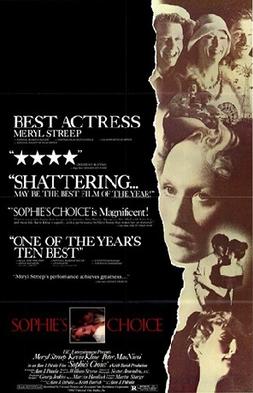Writer: Alan Jay Lerner, George Bernard Shaw
Composer: Alan Jay Lerner
AFI Rank: 91 (1998), - (2007)
BFI Rank: -




My Fair Lady was already a phenomenal success on broadway when Jack Warner purchased the rights to bring it to the big screen. Rex Harrison, Julie Andrews and Stanley Holloway had originated the key roles and were all keen to star in the film but the casting of the film would be anything but simple. Jack Warner had seen Harrison in Cleopatra and felt him too old to play the part of Higgins. Cary Grant turned down the role claiming that not only would he not do it but he would not even see the picture if Harrison was not cast. Holloway got the part after James Cagney pulled out at the last minute. Andrews was not as lucky. Harrison had pushed for her even though he had initially had problems with her grasp of the cockney accent in rehearsals for the stage production. Ironically he felt Hepburn would have even more trouble but she surprised everyone delivering an iconic performance and Harrison later referred to her as his favorite leading lady. Hepburn's performance did not even get an oscar nomination but is perhaps less surprising given the popularity of Andrews in the broadway production and Marni Nixon's dubbing of all of Hepburn's numbers on screen. Andrews actually got the Oscar that year for Mary Poppins just to add salt to the wound. Surpisingly Marni is american and also had to get her chops around the accent but she had already proven herself dubbing Deborah Kerr and Natalie Wood in West Side Story (only on "Tonight") and The King and I. Marni has spent most of her career off camera including Mulan's grandmother in 1998. Ironically she did get a small part in Andrews breakout film just a year later, a little picture called The Sound of Music. Jeremy Brett was brought in to make Hepburn seem younger. He was 30 at the time while Freddy is 20. He too suffered the fate of overdub, this time by another american Bill Shirley.
The most striking thing about My Fair Lady is that the entire movie was filmed inside, specifically on a staggering 26 sound stages at Warner Brothers' Burbank studios. Coming on the back of the budget busting Cleopatra which was filmed on location in Rome, the decision was to keep the filming in Hollywood. All told it still became the most expensive Warner brothers film at that time coming in at $17m. There was absolutely no location filming, something that annoyed creator Alan Jay Lerner. The lack of any real exterior locations creates an interesting and almost claustrophobic stage set feel to the whole picture. This is particularly evident during the Ascot scenes which take on a surreal almost anachronistic quality making them more Logan's Run than Sound of Music. David Hall's choreography certainly adds to this and the result is perhaps more iconic than had it been filmed on location in the UK.
 |
| Beaton's oscar winning costume designs for the Royal Ascot scenes |
George Cukor was already an established and respected director by the time he came to helm My Fair Lady. He had started on broadway and was especially skilled at bringing stage productions to the big screen. He did uncredited work on some of my all time favorite movies including Lust for Life, The Wizard of Oz and Gone With The Wind (which he was fired from).
My Fair Lady swept the oscars in 1965. It garnered 12 nominations and won 8 including Harrison for best actor, Cecil Beaton's incredible costume design, Gene Allen's incredible sets, sound, music, cinematography and most importantly of all best picture. In what has become a good indicator of oscar success Cukor had gotten the DGA award earlier in the year and went on to take the oscar too. It was an interesting year at the oscars with competition from Mary Poppins, Zorba The Greek, Becket and Kubrick's masterpiece Dr. Strangelove. Seller's was also on screen and stealing most of the scenes in The Pink Panther which only received a music nomination. Another of my favorite movies managed a visual effects nomination and a honorary makeup award for William Tuttle, George Pal's superbly quirky 7 Faces of Dr. Lao.
I had been holding off watching My Fair Lady as the blu ray was imminent and given the previous DVD restoration I had high expectations. The bad news is that this is not the hidef release everyone has been hoping and waiting for. Robert Harris covers the topic in great detail over at the Home Theater Forum. The bottom line is that if you have the DVD you don't need to upgrade, if renting then the blu ray is a fine option. My experience supports that. The blu ray is definitely a disappointment but not terrible relative to movies of the same age. It is just that expectations are higher for film of this profile.
The sixties was arguably the last decade of the great hollywood musical with the superb but commercial flop, Hello Dolly!, ushering in its end. Audiences of the seventies wanted gritty realism and even though there were some great musical pictures produced in that time including Grease, Jesus Christ Superstar and The Rocky Horror Picture Show, they were not from the same stable. If you don't like or don't get musicals then there is little I can do to change your mind except to say you are missing out on some of the greatest pictures ever made.
Surprisingly My Fair Lady was dropped from the AFI 100 in 2007 having made position 91 back in 1998 and hence its low showing in my combined list.
My Fair Lady is one of the greatest stage musicals ever produced, itself a musical adaptation of George Bernard Shaw’s Pygmalion, and a near perfect a big screen musical adaptation. It is unquestionably Crucial Cinema.















